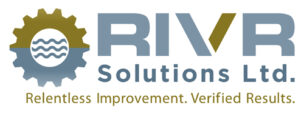By Greg Hastings
This month we are going back to the fundamentals, 5S, or to include safety, 6S. This is one of the best tools for instilling Lean practice into the culture of your organization, because at the center of practicing the first 4 S’s, the fifth S is ‘Sustain.’ Daily monitoring your work stations and ensuring that the right tools are in the right place without clutter keeps a Lean culture at the top of mind. However, many organizations never get to ‘Sustain’, and many don’t get past the first ‘S,’ Sort. But even if they do, they don’t realize there is a ‘P’ in the middle of practicing 5S, and that is ‘Process.’
I have had people come to me so happy with a real sense of accomplishment that they cleaned up their area and got rid of a bunch of things that they didn’t use, and they say, “Hey Greg, I 5S’d my area come look!” So we go to the area and it is very tidy with tools put away and a pallet of things that they yarded from their work area, but when I ask them why he put these tools under the bench, and why these tools are in the cabinet, they would reply, because that is the spot I found for them. The worker did a great job at cleaning up, and probably achieved the first ‘S,’ Sort, and maybe did a little of the third ‘S,’ Shine. But they completely missed the second ‘S,’ Set in Order, and hasn’t even gotten to the fourth ‘S,’ Standardize. This is because the worker’s ad hoc 5S project did not involve studying his process.
When RIVR works with companies on a 5S Kaizen, we don’t even start on 5S until we have performed a Value Stream Map (VSM). The VSM isn’t necessarily broken down with step by step timings, but what we do focus on are the value added steps in their process and the tools that they need to perform each task within their process. This allows the team to discern what is needed in their immediate area when doing work, and what can be put a bit farther away. Studying the process is critical to making good decisions when Setting in Order and Standardizing.
I had a client last year set up a kitting process for plumbing assemblies. Their area was cluttered with old chairs, a refrigerator and paper towels. These were all items that did not show up on their VSM, but were items they worked around everyday. When we began to sort out the things that didn’t add value, the team was very reluctant to get rid of the chairs because they used those chairs to eat their lunch around the work table. However, after we went through the exercise, the team was able to create enough open space to move the kitting and assembly table to its own area, and have a separate space away from prime production so that they could also eat lunch without tripping over chairs while they were working.
Process has to be essential to achieve all five S’s. It is the only way to understand where to put your tools, what needs to go on your shadow boards and visual controls, and standardize your process to eliminate as much waste as possible.

Don’t lose the discipline of 5S. We always talk about the 5S’s, but we never see the implied ‘P’ inside those S’s. Without process, one will never truly attain sustainable efficiency in your workspace, and allow all of the great efforts of sorting and sweeping to fall away to more non-value added activities.


